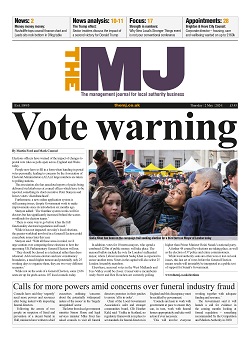Having worked with many organisations across both public and private sector, I’ve noted many that loudly declare ‘We have a very flat structure here at “X”’ followed by a contradictory action, such as a procurement decision that must be signed off by four different people taking months to action. We have probably all encountered this at some stage.
Organisational structures and the way we interact with colleagues have fundamentally changed over the last three years allowing us to question traditional organisational methods and structures.
The status quo of top-down decision making, hierarchical structures and protracted bureaucracy are no longer fit for purpose in a world that is volatile, uncertain, complex and ambiguous (VUCA). More than ever, organisations and their leadership teams need agility to react quickly to change. So, what is the antidote to counteract well-worn outdated systems and structures, especially when you throw political pressures of local government into the mix?
Speaking to a range of local government leaders across the UK, there is an acknowledgement we need to redefine the way we design our organisations to achieve better outcomes for our communities. This was one of the many key areas discussed at a recent Talent Rebels roundtable with HR leaders GatenbySanderson held in partnership with North West Employers. The challenges facing local government are immense with further public sector cuts on their way, the cost of living crisis, challenges of attracting/retaining talent and political uncertainty to name just a few. The speed of national and global change and its immediate impact upon communities requires local government to be both agile and ready to deliver a response. This, in turn, demands skilful navigation.
The evolution of leadership practice
It is interesting to reflect on the change in leadership theory over the years – from models of heroic leaders or ‘great man theory’ (an unedifying phrase from the 1840s), in which just one or two leaders at the top make all the decisions. Situational theory (1960s) then noticed the need to recognise the context of leadership in particular situations. Then came the emergence of transactional and transformational leadership (1990s and 2000s) where the focus was on the complex interactions among the leader, the follower, the situation and the systems in which they operate.
More recently there has been attention on more people-centred leadership such as ‘collaborative leadership’; ‘servant leadership’ and ‘inclusive leadership’. Both the emphasis and evidence has changed from decision making held by one or two individuals to a collective group of specialists.
The power and perils of distributed leadership
Distributed leadership is fascinating to study and I regularly listen to thought leaders in this space such as Professor Alma Harris and Joseph Kessels.
As the term suggests, distributed leadership is basically shared leadership. It involves leadership practices that are more collaborative, open and decentralised, enabling organisations to view leadership not as an individual characteristic but as a system involving networks of leaders (some formal and some informal) who operate across all levels of the organisation and often across organisational boundaries.
At its best, distributed leadership empowers a network of leaders across the organisation to make quick, effective decisions that improve performance. At its worst, distributed leadership can be seen as a way of simply delegating more work to others; it most definitely is not a means to pass on tasks that you would rather not do yourself.
This more flexible and fluid model can only happen successfully when the team members have a clear understanding of skills, capabilities and ambitions. Distributed leadership exists to give more autonomy to a collective group of specialists who are best positioned to come up with a successful solution and therefore there is a need to understand each other’s skillsets and capabilities. Distributed leadership without this understanding can be counter intuitive.
Research into distributed practices have shown several useful advantages including:
• Speed – decisions and tasks are completed much faster when power is distributed
• Productivity – giving employees more independence over their work nurtures trust and ownership
• Innovation – autonomy also grants more space for creativity and collaboration. Employees are more likely to interact with their colleagues, share experience and knowledge, and benefit from a stronger connection.
• Talent retention – If skilled workers aren’t given the opportunity to move up, the chances of them staying are slim. With a shared management approach, everyone gets the chance to lead and determine their own career path.
When distributed models of leadership are implemented successfully, it empowers staff at all levels of the organisation to take responsibility for decisions rather than relying on just a few individuals to have all the answers. It does, of course, require the key ingredient of ‘trust’. As the sector looks to answer some of the biggest challenges in our lifetime, it is key we continually learn how we can create the structures and systems that empower our local government workforce.
To sum up, as former US Secretary of Homeland Security, Tom Ridge, once said: ‘You have to enable and empower people to make decisions independent of you. As I’ve learned, each person on a team is an extension of your leadership; if they feel empowered by you they will magnify your power to lead.’
Phil Whitman is client solutions partner in GatenbySanderson’s leadership and talent consultancy
This article is sponsored content for The MJ



